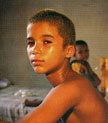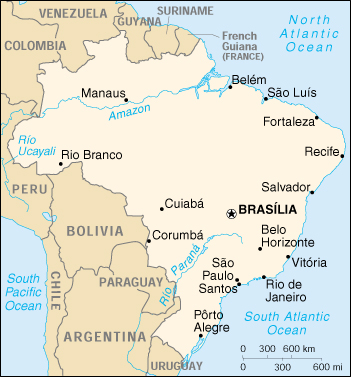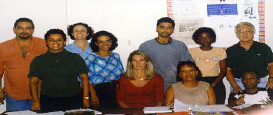URBANIZATION, POVERTY, AND CHILDREN IN LATIN AMERICA
Brazil: Case Studies
Desirée Allen

Students Helping Street Kids International is a
tax-exempt, nonprofit organization incorporated in the state of Oregon in
1997 to provide a service-learning opportunity to U.S. students and others.
It enlists their help to raise funds to pay for scholarships for street kids
in Brazil and elsewhere in the world so they can attend school in their own
communities. Additionally, other projects benefitting street kid will be funded.
Goals:
Locations: Oregon USA, Rio, Recife, Goiania (Brazil)
Major Participants: Students of local
schools through out the United States, The State of Oregon, schools in previously
listed cities in Brazil and, impoverished Brazilian Youth.
 |
Pablo Aurélio da Conceição - Born 7/5/84. Pablo is an orphan living with his brother, sister-in-law and their three children in the shantytown of Maré. He is a third grader. He is at a critical age for being drawn into the drug trade which is rampant in his shantytown. He is bright, personable and determined to walk the straight and narrow and get a good education. |


Serviço de Educação
e Organização Popular
(People's Education and Training Service - SEOP).
Ideology Behind Novartis and SEOP
"On the one hand this is positive; on the other hand, it sometimes leads to the "Calcutta Syndrome", where compassion is temporarily lavished mainly on smaller children. Street children are actually wooed by many projects. As a result, the streets become particularly attractive to children from the slums. They move rapidly from project to project, taking advantage of what is on offer, although this does nothing to get them off the streets.
For this and numerous other reasons, the "palliative" approach should increasingly be abandoned in favour of a preventive approach focusing mainly on organising the poor settlements and providing them with what is most necessary in terms of infrastructure."
Location of SEOP: Petrópolis has 300,000 inhabitants and is located outside of Rio.
SEOP Bio:
This shelter is a small building built by the community and run by a local woman, Mrs. Macedo of 65 years. Novartis through soliciting funding from individuals in Switzerland and the "One World" German group, was able to assist SEOP in improving the building by building showers and bathrooms, providing food, and adding a second floor.
